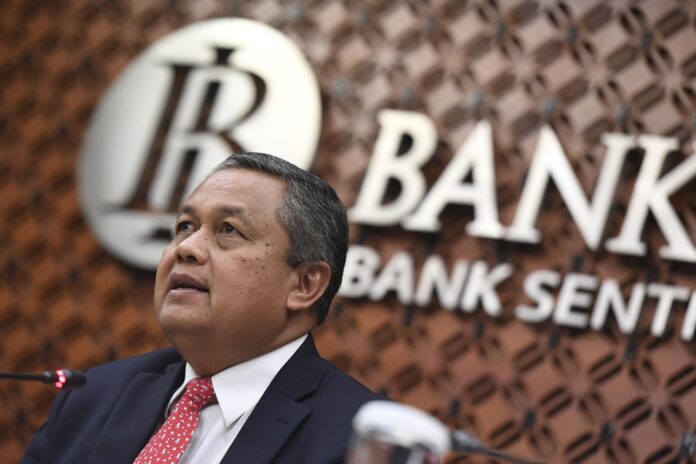Governor of Bank Indonesia (BI), Perry Warjiyo, has provided insights into the current economic conditions in the United States (US) and how they have the potential to influence future changes in the fed fund rate (FFR).
According to Perry, the US is experiencing high inflation pressures primarily due to the tight labor market, alongside a relatively robust economic environment and stabilizing financial system. These factors contribute to the likelihood of an upward adjustment in the Fed Fund Rate in the future. Meanwhile, monetary policies in Europe remain tight, while Japan leans towards a more accommodative stance.
Furthermore, Perry highlights that in emerging economies, particularly in China, economic growth is not as robust as anticipated, coupled with low inflation rates. Consequently, China has been prompted to adopt a more relaxed approach to monetary policy, aiming to stimulate economic activity.
It’s worth noting that the benchmark interest rate of the US central bank, the Federal Reserve (The Fed), was maintained during the June meeting. While this decision provides some relief to households by alleviating high borrowing costs, it is essential to recognize that the Federal Reserve’s cautious approach is influenced by various factors.
Since March 2022, the US central bank has gradually raised its benchmark interest rate by 10 consecutive increments, reaching a target range of 5% to 5.25%. This rapid pace of tightening is the swiftest since the early 1980s. Although inflation is beginning to moderate, it still surpasses the Fed’s target of 2%.
Simultaneously, wage growth has struggled to keep up with the rising prices experienced by many Americans. As a result, a significant number of households find themselves caught in a financial bind, burdened by debt at a time when interest rates on loans are reaching record highs.
These developments highlight the delicate balance that central banks, including the Federal Reserve, must navigate as they strive to manage inflation, foster economic growth, and ensure financial stability. The global economy closely monitors these decisions and their implications for various stakeholders, ranging from households and businesses to policymakers and investors.
Governor of Bank Indonesia (BI), Perry Warjiyo, has provided insights into the current economic conditions in the United States (US) and how they have the potential to influence future changes in the fed fund rate (FFR).
According to Perry, the US is experiencing high inflation pressures primarily due to the tight labor market, alongside a relatively robust economic environment and stabilizing financial system. These factors contribute to the likelihood of an upward adjustment in the Fed Fund Rate in the future. Meanwhile, monetary policies in Europe remain tight, while Japan leans towards a more accommodative stance.
Furthermore, Perry highlights that in emerging economies, particularly in China, economic growth is not as robust as anticipated, coupled with low inflation rates. Consequently, China has been prompted to adopt a more relaxed approach to monetary policy, aiming to stimulate economic activity.
It’s worth noting that the benchmark interest rate of the US central bank, the Federal Reserve (The Fed), was maintained during the June meeting. While this decision provides some relief to households by alleviating high borrowing costs, it is essential to recognize that the Federal Reserve’s cautious approach is influenced by various factors.
Since March 2022, the US central bank has gradually raised its benchmark interest rate by 10 consecutive increments, reaching a target range of 5% to 5.25%. This rapid pace of tightening is the swiftest since the early 1980s. Although inflation is beginning to moderate, it still surpasses the Fed’s target of 2%.
Simultaneously, wage growth has struggled to keep up with the rising prices experienced by many Americans. As a result, a significant number of households find themselves caught in a financial bind, burdened by debt at a time when interest rates on loans are reaching record highs.
These developments highlight the delicate balance that central banks, including the Federal Reserve, must navigate as they strive to manage inflation, foster economic growth, and ensure financial stability. The global economy closely monitors these decisions and their implications for various stakeholders, ranging from households and businesses to policymakers and investors.



















